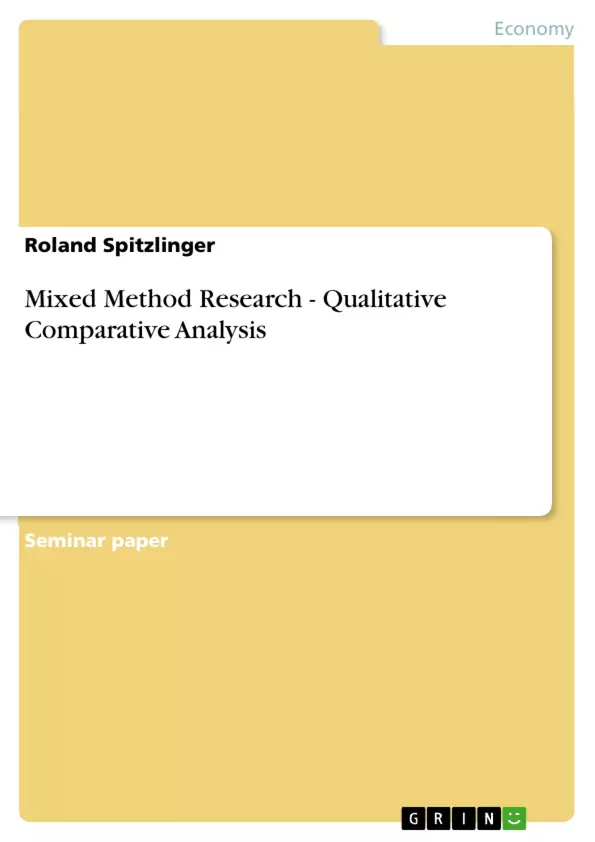Traditionally most social researchers either employ purely qualitative or quantitative methods, even though a mixed method strategy may promise better results. The present paper introduces Qualitative Comparative Analysis (QCA) as a mixed method alternative for data analysis. It may be of particular value when dealing with small-n case studies, which typically do not permit profound statistical testing. QCA enables researchers to filter those variables or combinations of variables that empirically result in (and possibly explain) a certain outcome. As such, the method can also be used to analyze the impact of social networks on companies’ innovation performance and promises valuable new insights in the field.
Inhaltsverzeichnis (Table of Contents)
- Introduction
- Methods of social research
- Quantitative method
- Qualitative method
- Mixed method
- Qualitative Comparative Analysis (QCA)
- Procedure and logic of QCA
- Strengths and weaknesses of QCA
- Applying QCA to innovation networks studies
- Research setting
- QCA and innovation networks
- Conclusion
- Executive summary
- Literature
Zielsetzung und Themenschwerpunkte (Objectives and Key Themes)
This paper aims to introduce Qualitative Comparative Research (QCA) as a mixed method alternative for data analysis. It particularly highlights QCA's value in small-n case studies where statistical testing is limited. The paper explores QCA's application in studying innovation networks, suggesting its potential for generating new insights in this field.
- Mixed methods research
- Qualitative Comparative Analysis (QCA)
- Small-n case studies
- Innovation networks
- Social factors and company innovation performance
Zusammenfassung der Kapitel (Chapter Summaries)
The paper begins by critiquing the traditional dichotomy of qualitative and quantitative research methods, arguing for the benefits of a mixed methods approach. It then introduces QCA as a mixed methods alternative, highlighting its strengths and limitations. The paper further explores the application of QCA in studying innovation networks, focusing on research settings and the potential insights QCA can offer in this domain.
Schlüsselwörter (Keywords)
This paper focuses on mixed methods research, particularly Qualitative Comparative Analysis (QCA) as a method for analyzing small-n case studies. It explores the application of QCA in the context of innovation networks, examining the relationship between social factors and company innovation performance.
- Quote paper
- M.Mag Roland Spitzlinger (Author), 2006, Mixed Method Research - Qualitative Comparative Analysis, Munich, GRIN Verlag, https://www.grin.com/document/151237



